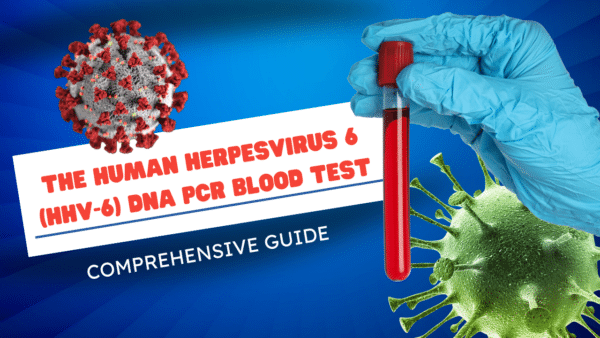According to the Institute of Medicine, a healthy female adult should be drinking 2.2 litres of water a day, and an adult male should increase that to 3 litres. As water is crucial for the overall functioning of the human body, it’s essential that you ensure your intake is sufficient. After all, water makes up 60% of our overall body composition!
But unsafe drinking water can lead to a raft of dangerous diseases that kill thousands of people each year. Just how safe is the water we’re drinking?
These are just a handful of illnesses you can get from unsafe water:
E. Coli
E. coli is a bacteria that is present in every human and animals digestive systems. Some versions of E. coli, like E. coli 0157:H7, can cause various intestinal infections. The symptoms of these infections can be quite serious – e.g. diarrhea, abdominal pain, and fever.
If the infection is more serious, you can develop bloody diarrhea or even kidney failure. If you suspect your water to be contaminated with E. Coli, you should get a stool test.
Malaria
Malaria is a disease caused by parasites that enter into the bloodstream through the bite of a mosquito. Although this is the only way that you can contract malaria, the mosquitoes lay their larvae in brackish, dirty water and this unsafe environment leads to scenarios where malaria can easily be spread.
Malaria causes fever, anemia, and can lead to severe complications and even death. Malaria is being found more frequently in areas where it was never prevalent before, which scientists have linked to global warming. If you suspect your water to be contaminated with Malaria, you should get a Malaria test.
Hepatitis A
Hepatitis A is a very contagious disease of the liver that results from contact with the Hepatitis A virus. Symptoms can vary from a mild illness lasting a few weeks and mimicking a stomach flu to an extremely serious illness that can last for several months.
Hepatitis A is usually spread when a person ingests fecal matter and this is usually from drinking water that has not been properly treated.
Lead Poisoning
Lead is a toxic metal that, for way too long, was used as a piping method for water. When concentrated in high levels in drinking water, Lead can damage the nervous system and the renal system.
Lead can be really harmful to fetuses and young children, but especially to pregnant women. The symptoms also aren’t easily detected in children, so it’s important to get them tested on a yearly basis. We recommend this lead poisoning test.
Typhoid
Of all of these, typhoid is probably the most dangerous of the waterborne diseases. It’s a life-threatening illness caused by the bacterium Salmonella Typhi. Water contaminated with this bacterium can lead to a grueling illness that can result in delirium, intestinal hemorrhage, bowel perforation, and even death – sometimes within 1 month of contraction. The same test for E. Coli can also be used to detect typhus infection, making this an important stool test for anyone who suspects their water to be unsafe.
In the developed world, we often take our water resources for granted and rarely question the quality of the water we’re drinking. However, water contamination is a very real thing and it’s something that can go undetected for a long period. This can lead to both acute and chronic health issues, such as immune system disorders, cancer, liver and kidney damage, nervous system disorders, birth defects, malaria, and even death.
What Causes Water Contamination?
The four types of contaminants that can enter your water supply are microbial pathogens, organic compounds, inorganic compounds, and radioactive elements. The microbes can make you ill straight away and are reflected in acute reactions such as a rash, dizziness, or nausea. The other 3 can remain underlying for a long time without presenting severe symptoms initially, but they can build up in your system over this period and cause long term chronic illnesses such as thyroid issues, gastrointestinal illness, neurological disorders and cancer.
How Can You Make Your Water Safe To Drink?
If you’re in an unfamiliar location and you’re unsure about the water you’re drinking, it’s a good idea to ensure that it’s disinfected first. The official guidelines for water disinfection from the CDC suggest the following:
Heat: Water that has been boiled for 1 minute is safe to drink, as most germs are quickly eradicated at high temperatures.
Filtering: You can buy a water filter in pretty much any home store or camping store, but it’s important to choose the right one. Filters sized between 0.1 and 0.4 microns will remove bacteria from your water but they won’t remove viruses. However, the new ‘hollow fibre’ technology can remove both. And if you also need to remove salt from your water, you should check out the ‘reverse osmosis’ filter.
Chemicals: Chemical tablets or packets can be bought to disinfect your water and the instructions are pretty simple, but this process might take a few hours.
Ultraviolet Light: Portable units are available that will deliver a measured dose of UV light which can disinfect small quantities of water. However, this may not work with cloudy water.
Solar Radiation: If you have nothing else to hand, sunlight can be used to disinfect water. Just leave the water in a clear plastic bottle under bright sunlight for a minimum of 6 hours. This works best if you place the bottle on a reflective surface such as aluminum or foil. However, this is another option that won’t work with cloudy water.
Although you can generally expect your home tap water to be safe for drinking, it’s wise to be vigilant. In accordance with The Clean Water Act, the EPA monitors water systems regularly and publishes the results in an annual report – which is worth keeping an eye on.

